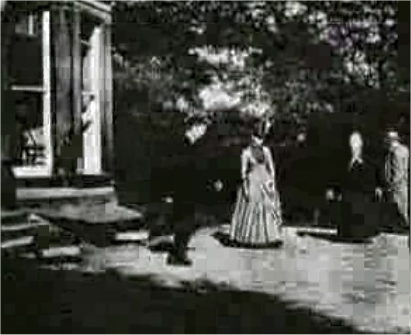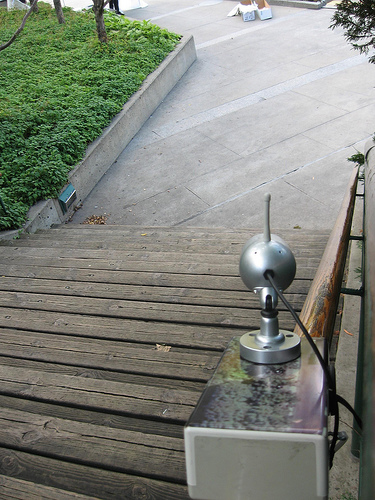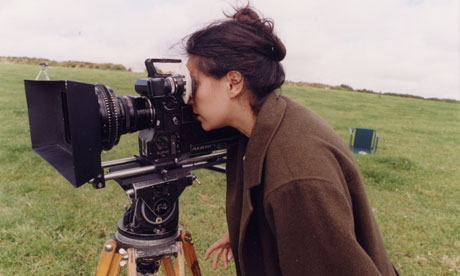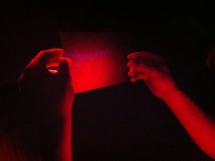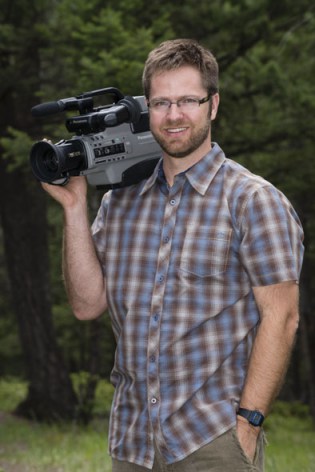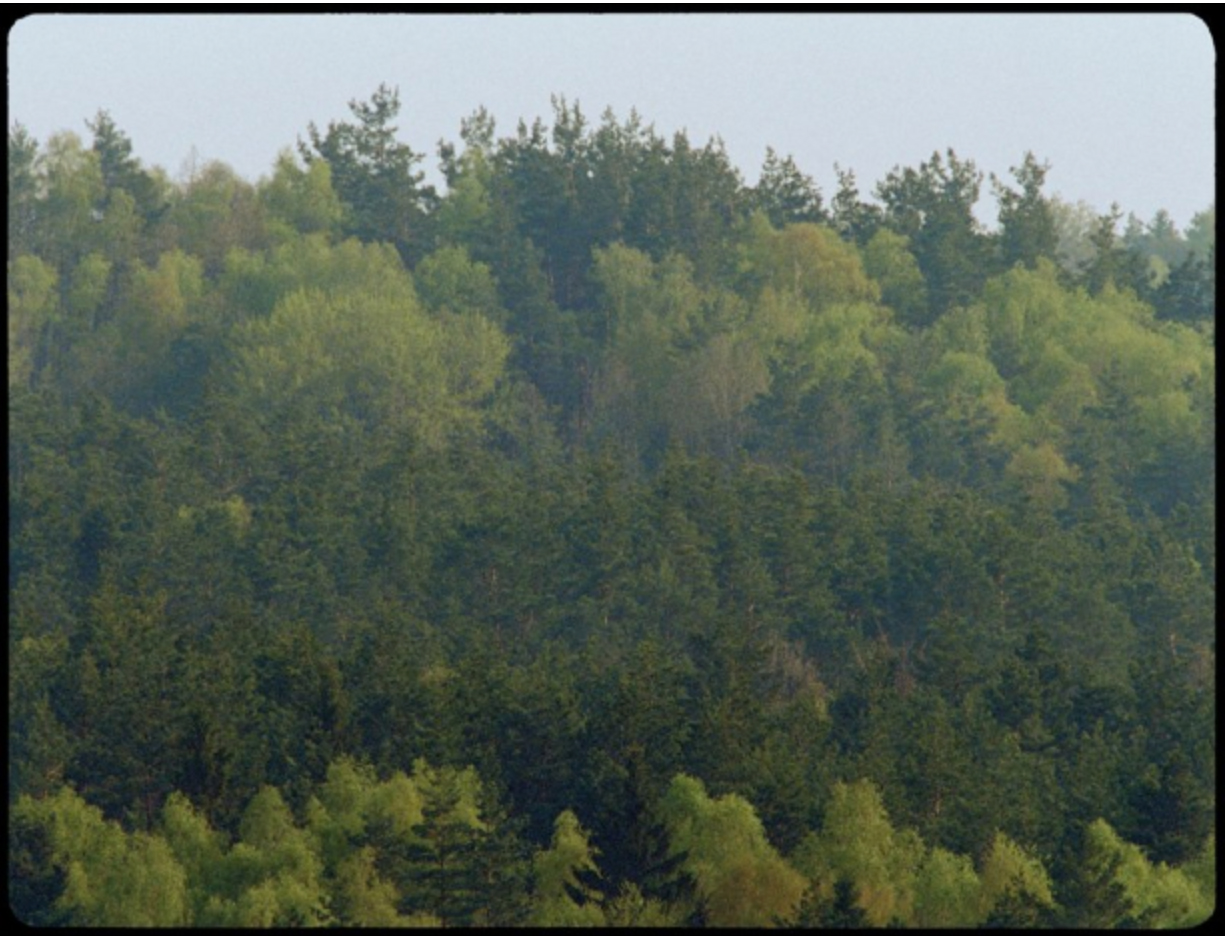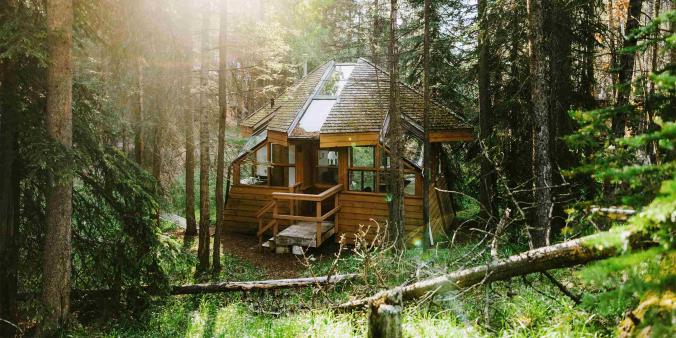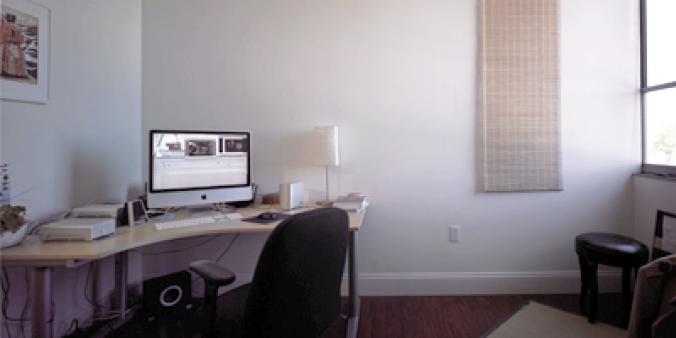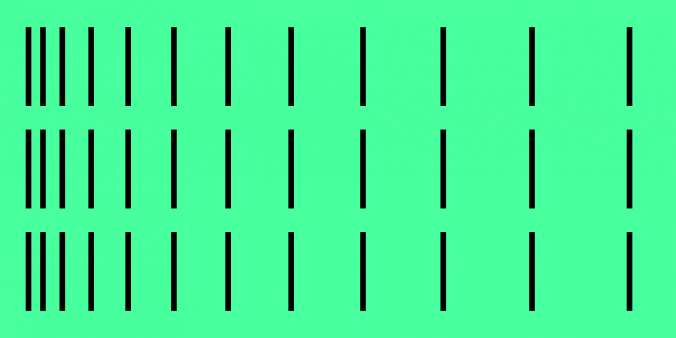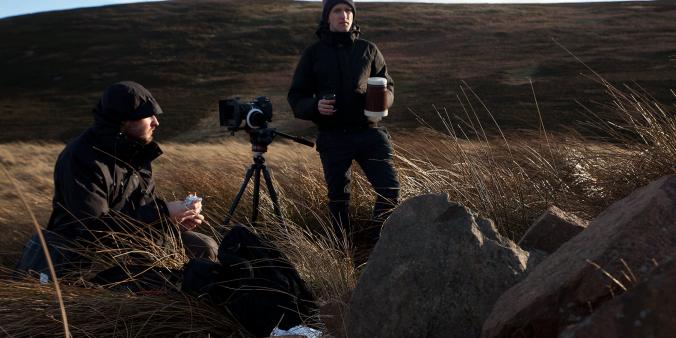Film AiR Collection
What about film and artist-in-residence? Do artists have special motives for using artist-in-residence opportunities for film? Do they have different demands? What do they ask from their hosts? Which artist-in-residence programs specialize in film, and why? What do these film-in-residence programs have on offer?
This Film AiR collection offers you an eclectic selection of residency programs, in which film is either in the center, or sneaking in at the margin. From Do It Yourself community environments (no.w.here) to fully equipped facilities (Banff), residencies show that artists can do anything with film: roaming, researching, discussing, copying, and yes, even burning. Get into the mood below.
Embedded: Matting Cinema
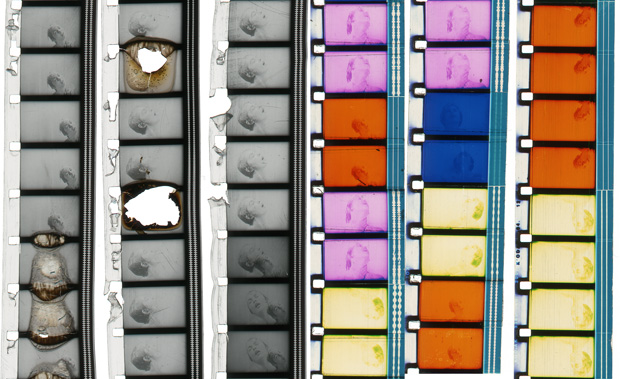
Hangjun Lee was in residence at no.w.here to make a new 16mm piece ‘Matting Cinema’ in September 2011.
For 16mm film, multi-projection, with exposed screen, photo-resisting sensor and speakers. This multi-projection film is made from a bunch of 35mm optical printing matts, abstract images which only exist for special effects such as dissolves, fades in/out etc. This 35mm printing matt will be contact printed onto 16mm film using a photographic enlarger and synchronizer, using soundtrack stock for high contrast, and home made high contrast developer. A photo-resistant sensor behind the screen will make what I call an “exposed screen” to make sounds which react with the various hi-contrast abstract images on the screen. These different forms of abstract image will make sound tracks and sound patterns.
- Deadlines: check the website for upcoming Summer residencies
- Produced by: Sound and Music / Resonance104.4FM / Apartment House
- Website: no.w.here
DIY ethos at no.w.here
no.w.here is a not for profit artist run platform based in Tower Hamlets that combines film production alongside critical dialogue about contemporary image making. Together with Sound and Music, no.w.here created embedded, the artist development program. The Embedded project places a selection of artists from a range of disciplines into real-world artistic contexts with leading national creative organisations. Aimed at talented artists at an early stage in their career, Embedded provides practical hands-on experience and significant creative opportunities. Embedded partners a selection of ambitious artists with pioneering arts organisations and ensembles in the UK. This rolling programme encourages professional development for artists alongside the opportunity to create new work in close collaboration with high quality partners over a sustained period.
KRAN
Kran Film Resident is a residency project initiated by Kran Film Collective in 2013. It merges film and video art practice with theory in order to question the notion of citizenship in migrating, multinational and multipolar network society. Affected by present economic, political and social predicaments, the creation of political identities as democratic citizens demands for reformulation of the notion of democracy. It is from this point that the residency aims to raise the questions of democracy, ethics, identity, migrations, populism, ecology and the like. One of the main challenges for Kran Film Resident is to examine how a project of radical democracy and a multipolar vision of the world order can contribute the creation of new forms of subjectivity, which are much more appropriate for the contemporary society at the beginning of the 21st century, and how film and video art may reflect this movement.
> Kran Film on TransArtists.org
Film & Media Filmmaker-in-Residence Winter
The Banff Centre
Program dates: February 23, 2015 - March 20, 2015
Application deadline: September 3, 2014
Program Fee: $96/day (single room) or $68/day (shared room)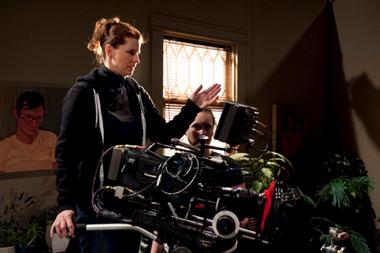
Film & Media’s Filmmaker-in-Residence program provides filmmakers with a rich, well-supported environment for content creation through every stage of production. Residencies are ideal for individuals and teams who want time and space to create new work, bring existing work to completion, or experiment with new techniques and modes of production. Projects in all stages of production, from pre to post-production are welcome. Your working environment offers a private studio accessible 24-hours a day, and/or collaborative working spaces. Requests for use of specific Film & Media facilities, including editing stations, digital effects lab, recording studios, and television studios, will be considered at the time of application. Access to these facilities is subject to availability and fees as applicable.
> Banff Centre for the Arts on TransArtists.org
Exploratorium Experience
Filmmaker Paul Clipson describes his artistic process and his experience as an Exploratorium Artist in Residence.
Since its inception in 1974, the Exploratorium’s Artist-in-Residence Program (AIR) has grown to include hundreds of artists and performers. The museum works with individuals and artist groups who are drawn to collaboration, interested in interdisciplinary dialogue, and open to developing new working methods. Projects have taken countless forms, such as multimedia performances, theatrical productions, animated filmmaking, immersive installations, walking tours, and online projects.
> Exploratorium on TransArtists.org
The San Francisco Film Society’s FilmHouse
The San Francisco Film Society’s FilmHouse is located in 4,800 spacious square feet of office space located in the bustling Fillmore District. The residency program is designed to offer free office space to filmmakers in various stages of production where they can share talents and resources with their peers. Currently FilmHouse offers residencies 6 months to filmmakers with a narrative project that, through plot, character, theme or setting, explore social issues of our time. Through resident-led workshops, a guest speaker series, and numerous other community-building events, FilmHouse is designed to strengthen resident filmmakers' skill sets as a way of contributing directly to the progress of their ongoing film projects.
> SFFS on TransArtists.org
La Bande Vidéo
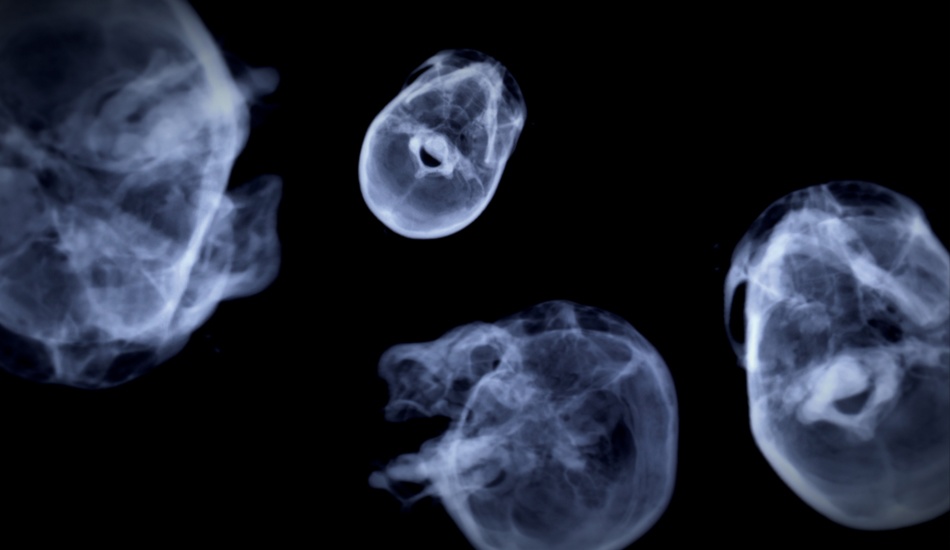
still from 'Corps étrangers' by artist in residence Nicolas Brault
La Bande Vidéo supports the production and presentation of media art to stimulate the circulation of information, ideas and video images. La Bande Vidéo is inviting artists working in media arts (or artists seeking to experiment with videographic media) to submit proposals for production residencies. The artist-in-residence program is available to artists working in Canada and abroad. La Bande Vidéo supports work by artists who are interested in moving the discipline forward. The center hopes to receive research projects that explore permeability among different medias. The selection committee might also put an hold on some residency projects for a month-long exhibition in the center’s gallery.
> La Bande Vidéo on TransArtists.org
Wex
As a research and development laboratory for the arts in all disciplines, the Wexner Center has offered significant support to artists in myriad ways since its inception in 1989. Residencies and commissions sponsored by the Wex have allowed hundreds of artists working in all disciplines from around the globe to create new work or explore new creative directions. The center’s support for artists underscores a core commitment to inspire cultural curiosity and fuel the creative expression of our time, while complementing Ohio State’s mission as a leading research institution. Works produced under the auspices of Wexner Center residencies and commissions often premiere here and then travel the globe, and they virtually always allow for meaningful interaction among the artists, the university community, and the public at large.
> Wexner Center on TransArtists.org
Film at Cern
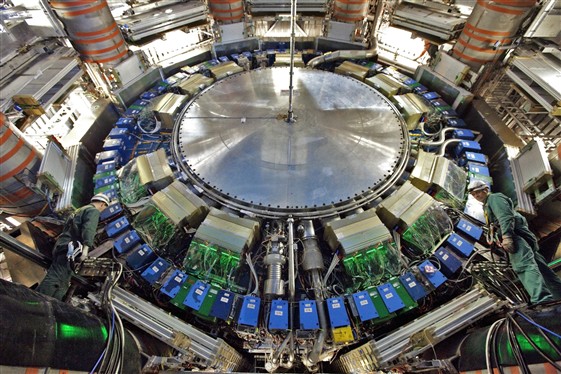
The new film award, funded by the City and Canton of Geneva, is open to international film makers and scriptwriters working in film of any kind, including feature film, short film, documentary, drama or animation, who were born in Geneva, or who currently work or live in the Geneva area.
- Deadline: check the website for the upcoming open call
- Where: Collide@CERN Geneva
- The award: 15,000CHF stipend and a 15,000 CHF grant to develop the new CERN-inspired work during the 3-month residency
- Rules & application
> CERN on TransArtists.org
Echo Park Film Center
Since 2002, Echo Park Film Center has provided a dynamic creative meeting place for filmmakers and film lovers of all ages to come together in celebrating the magic of the moving image. Echo Park Film Center is a non-profit media arts organization committed to providing equal and affordable community access to film/video resources via five channels: a neighborhood microcinema space, free and nominal cost education programs, a comprehensive film equipment and service retail department, a green-energy mobile cinema & film school, and a touring film festival showcasing local established and emerging filmmakers.
The longest dolly in the world
Cinetrain is a unique cinema event taking place in Russia once every second year. This si not something new. In soviet Russia, in the 1930's, film crews, under the guidance of Aleksandr Medvedkin, used to travel through the Soviet Union in specially equipped wagons. Although they were filming the industrial achievements of the regime, the underlying goal was to give the power of speech to people who didn’t normally have the opportunity to get their voices heard.
Residencies
A few residency programmes specifically targetting filmmakers or artists interested in working with film
- Berwick Visual Arts (UK)
- Beirut Filmstation (Lebanon)
- LIFT (Canada)
- Objectifs (Singapore)
- Pixel Palace (UK)
- Résidence du Festival (France)
Funding & grants
Creative Europe
The MEDIA sub-programme of Creative Europe 2014-2020 supports the EU film and audiovisual industries financially in the development, distribution and promotion of their work. It helps to launch projects with a European dimension and nurtures new technologies; it enables European films and audiovisual works to find markets beyond national and European, borders; it funds training for professionals in the audiovisual industry and it funds development schemes.
For more information in (English): http://ec.europa.eu/culture/media/index_en.htm
The Creative Europe Desk at DutchCulture, Centre for International Cooperation provides information and advice on funding for European cooperative projects in the cultural and audio-visual sector. Among other tasks, our colleagues advise you on the above mentioned MEDIA sub-programme.
The Ontario Arts Council
Purpose: To provide grants up to $10,000 to artists working with film, video and digital media as independent artist-controlled art forms. The program supports those working in a range of media production formats, including video, film, audio and digital.
Eligibility: This program is open to Ontario-based emerging media artists. Eligible projects are independent productions initiated by the applicant (director) where the applicant has creative and editorial control. Projects with budgets under $75,000 are eligible.
Deadline: November 1st. One deadline per year.
Website
The Canada Council for the Arts
Research/creation and production grants are available to established, mid-career and emerging artists. Scriptwriting grants are available to established and mid-career artists only.
Research/Creation Grants
- Established and mid-career artists: $3,000 to $60,000
- Emerging artists: $3,000 to $20,000.
Production Grants
- Established and mid-career artists: $3,000 to $60,000
- Emerging artists: $3,000 to $20,000.
Scriptwriting Grants
- Mid-career and established artists: $3,000 to $20,000.
Deadlines: March 1 and October 1
SFFS Documentary Film Fund
The SFFS Documentary Film Fund supports riveting documentaries in postproduction distinguished by compelling stories, intriguing characters and an innovative visual approach. A total of $300,000 has been disbursed between 2011 and 2013 to documentary filmmakers nationwide. Read more...
Djerassi Screenwriting Fellowship
Sponsored by the the Dale Djearssi, the Djerassi Residency Award/SFFS Screenwriting Fellowship will provide a one-month residency at the Djerassi Resident Artists Program for an emerging or established screenwriter in 2013. Read more...
Other funding:
- Film Förderpreis of the Robert Bosch Stiftung (Arab world + Germany)
- Script writing residency grant for french speaking films - in France
- Ford Foundation JustFilms funding for documentary on social issues
Festivals
VIDEOART.NET
Videoart.net is thrilled to announce its call for submissions to the 2014 Video Art & Experimental Film Festival, being held at the iconic TriBeCa Cinemas in New York City on October 2-4, 2014. Talented filmmakers from around the world are invited to submit to this cutting-edge festival with the Online Submission form.
Festival Focus
Submit your films to suitable festivals. Festival Focus is a free directory of film festivals & films. They exist to help film makers promote their films to festivals all over the world. With over 4,000 film festivals now happening every year, Festival Focus provides a central point to learn about which film festivals are out there and the type of films they are looking for.
An overview of festivals
Resources
Please send us your tips and links about resources for filmmakers - we will include this here!
Asia-Europe Film Platform: film.culture360.org
Repertory of media and video art resources by La Bande Vidéo (In French, published in 2014): labandevideo.com
Website of the Creative Europe Desk | MEDIA provides news and publications (in Dutch and some in English), as well as links to projects supported by the MEDIA programme: www.mediadesknederland.eu
Other Creative Europe Desks in Europe: ec.europa.eu/culture/tools/creative-desks_en.htm
